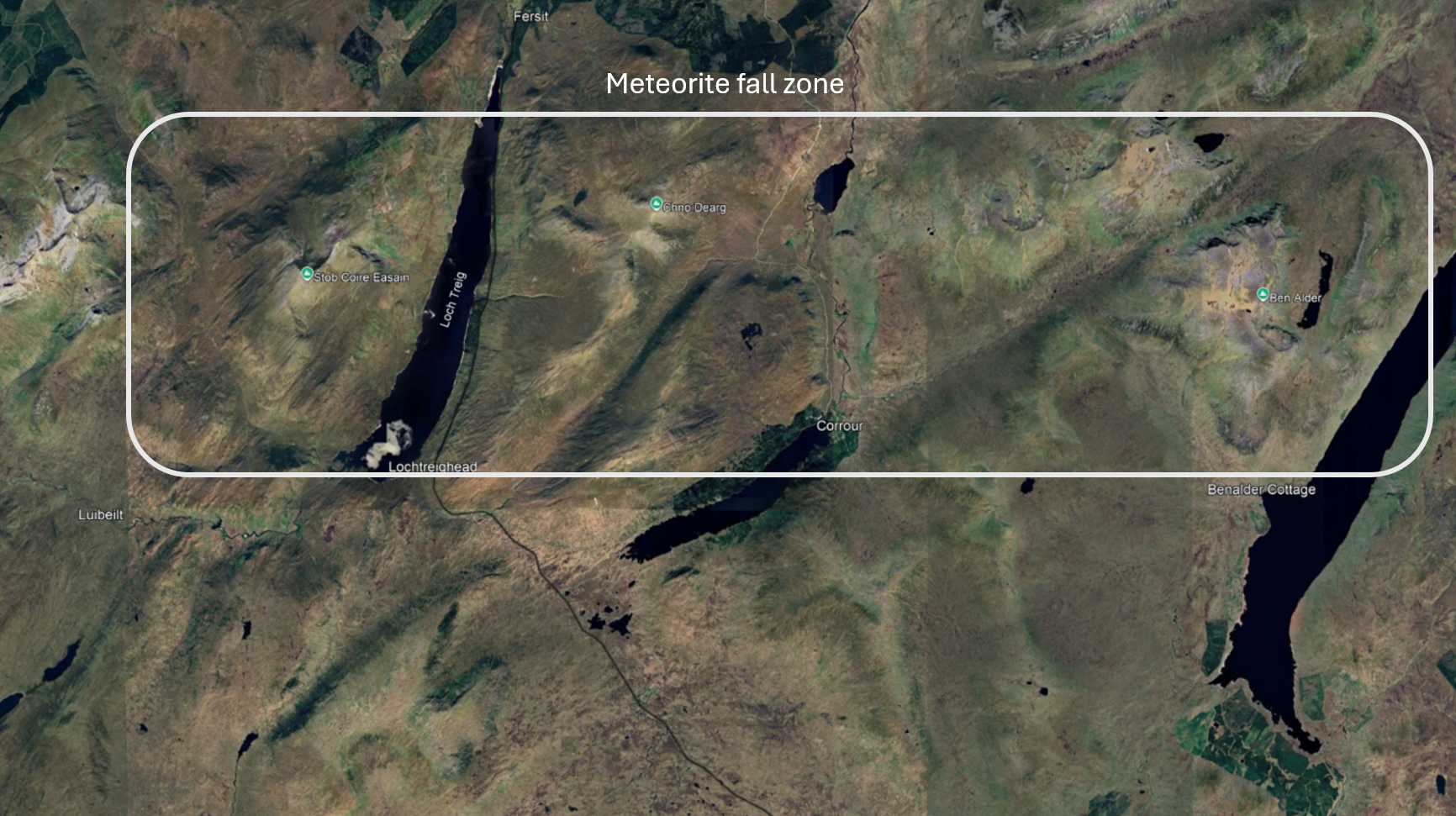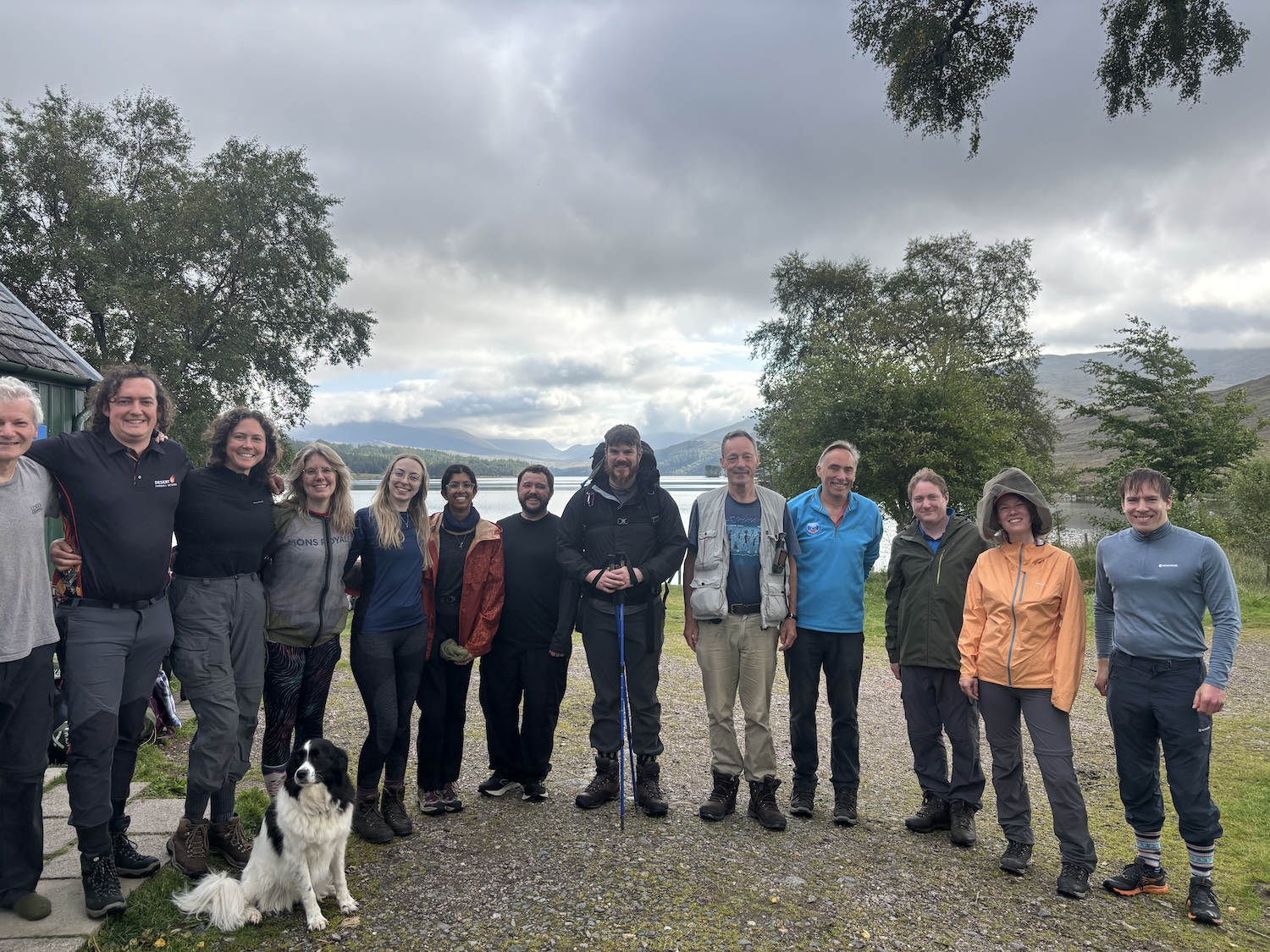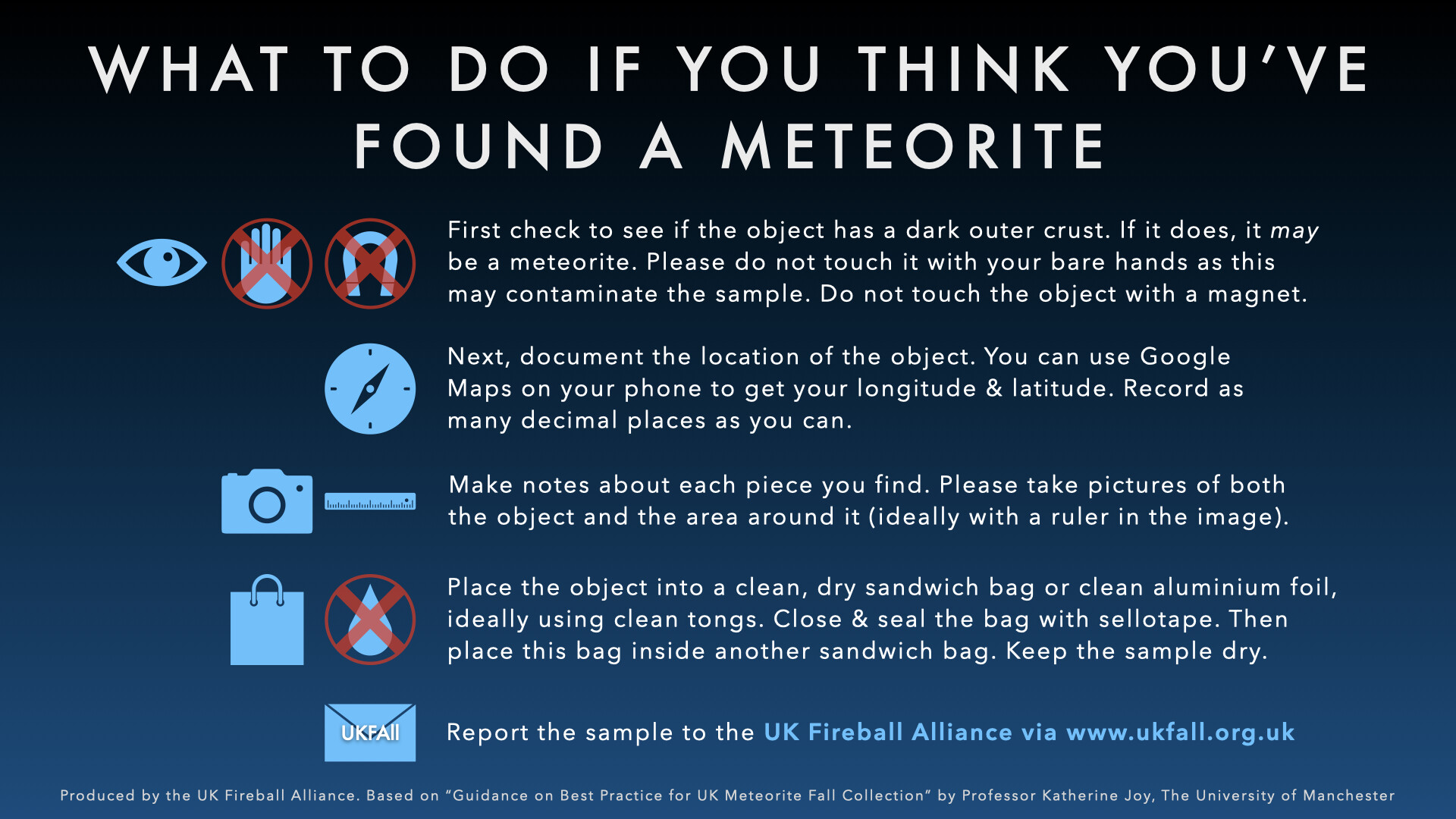Hillwalkers urged to help with historic meteorite recovery efforts
Published: 12 September 2025
Hillwalkers setting out to bag a Munro are being asked for their help to bag a meteorite too, as scientists race against time to recover precious samples of a space rock which lit up the skies over Scotland this summer.
Hillwalkers setting out to bag a Munro are being asked for their help to bag a meteorite too, as scientists race against time to recover precious samples of a space rock which lit up the skies over Scotland this summer.
In the early hours of Thursday 3rd July, a meteor exploded as it entered the atmosphere over the north of the country. The fireball it created quickly went viral on social media, with users sharing footage of its trail captured on their mobile phones and home security cameras.
Researchers from the UK Fireball Alliance have combined data from public videos with images taken from their own dedicated meteor tracking cameras including the Global Meteor Network, UK Meteor Network and Global Fireball Observatory to reconstruct the meteor’s path and estimate where the meteorite fell.
They are appealing to hillwalkers to keep their eyes peeled for fragments of the meteorite when they are out and about across three Munros in the Scottish Highlands. If a hiker is lucky enough to find a piece, it would be the first time in more than a century that a meteorite has been successfully recovered in Scotland.
Fragments of the rock may be scattered across around 20 km of the Highlands, according to the team. Their analysis of the footage suggests that smaller fragments of up to 100 grams were dropped to the west as it travelled across Stob Coire Easain and Chno Dearg, before larger chunks up to 10 kilograms fell over Ben Alder.

The team expect the majority of the meteorite’s mass to have landed on Ben Alder's plateau, where exposed granite could make the dark space rock more visible to visitors.
A team of 14 volunteers from the Universities of Glasgow, Edinburgh, St Andrews and Manchester as well as several citizen scientists recently spent several days scouring the western side of the fall line. Their efforts were cut short by bad weather before they could recover any of the meteorite fragments, so they are turning to hillwalkers to ask for help.
Professor Luke Daly, of the University of Glasgow’s School of Geographical & Earth Sciences, was co-leader of the search party. In 2021, he led the team which recovered the largest intact fragment of the Winchcombe meteorite, the first of its kind to be retrieved on UK soil in nearly 30 years.
Professor Daly said: “Meteorites are time capsules of the early Solar System, which hold a wealth of information about how our Solar System formed and developed. This is a very exciting opportunity to learn more about where this rock came from and where it has been and fill in a bit more of the jigsaw of our Solar System’s history.
“We know from intensive analysis of the Winchcombe samples that meteorites are very quickly affected by contact with the Earth’s atmosphere. The longer these pieces sit out on the Scottish hills, the more they will be weathered and the less we’ll be able to tell about their composition. The clock is very much ticking on our chances to learn as much as we can from these rocks, so any help that hillwalkers can give us could make all the difference.”

The School of Geographical & Earth Science’s Dr Aine O’Brien also led the search team. She said: “We’re asking hillwalkers to keep an eye out for rocks which stand out from everything around them. Meteorites are black and shiny with an almost glassy appearance, and they are heavy for their size. Since it could be about 30% iron, it may also look slightly rusty after all the rain we've had recently.
“If someone is lucky enough to bag a meteorite while bagging a Munro, we’re asking them to take a photo and take a note of their GPS location and send it to the UK Fireball Alliance. If it’s small enough to be picked up, please try not to handle it directly – wrapping it in aluminium foil or a clean sandwich bag would be very helpful. If it’s too big to carry, the GPS location will help us recover it later.”
The UK Fireball Alliance, or UKFAll, is a collaboration of camera networks which monitors and tracks meteorites as they enter Britain’s airspace. UKFAll volunteers used footage drawn from 14 different cameras to reconstruct the meteorite’s path and how it fragmented as it fell.
Jamie Shepherd of the UK Meteor Network said: “I've had a life-long fascination with meteors and meteorites, and for a school project I asked the National Museum in Scotland if they would let me take pictures of the last recovered meteorite seen to fall here in 1917. They kindly took all four pieces out of the cabinet and allowed me to hold them and take pictures. The next one to be found will be history-making and it's very special to be part of the recovery team.”
The team are reminding hillwalkers that there is no vehicle access to the area without prior permission from the local estates, and asking visitors to be respectful of the environment and other people who are enjoying the wild Scottish Highlands. The UKFall website has an online guide on how to collect and report meteorites.

First published: 12 September 2025
<< September

